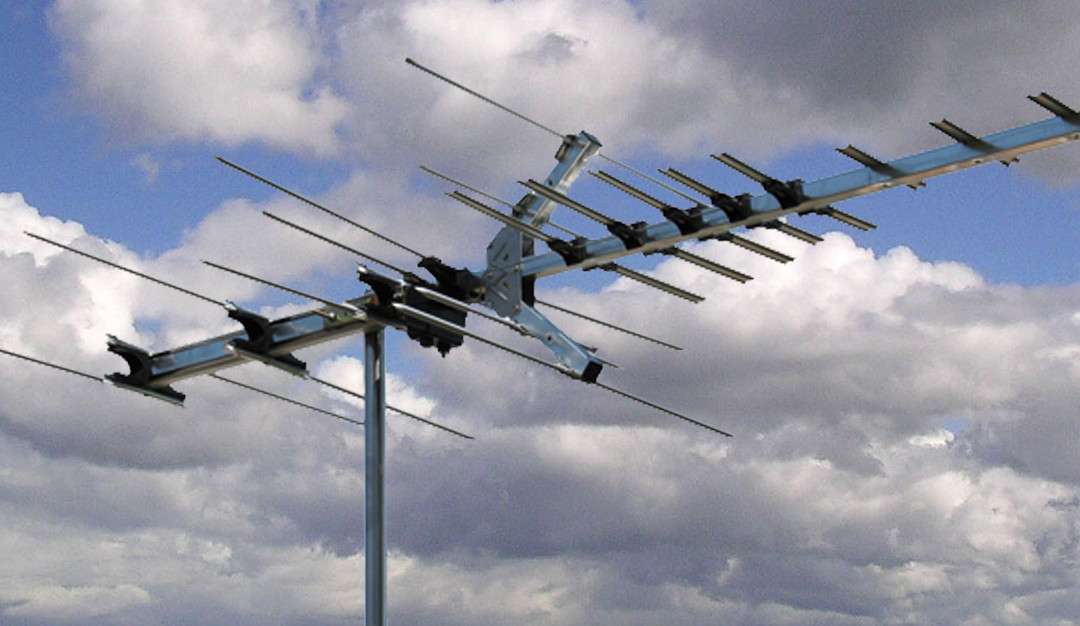Antennas are back in a big way. With all the talk about “cutting the cord,” antennas make perfect sense. There’s no monthly bill and there are over 20 free channels of programming from which to choose, and likely more on the way in the future. Installing antennas is still one of our fastest growing services.
So it was particularly curious when we started hearing from customers asking if broadcast TV was going away. Apparently, there’s some misinformation being floated around as people cancel their pay TV services that suggests that free over-the-air TV will soon be no more. It’s interesting considering the recent explosion of free TV channels hitting our airwaves here in Northeast Wisconsin.
So what’s this all about?
Much of this confusion and misinformation centers around the Federal Communications Commission (FCC) recently closing an “incentive spectrum auction” of a small section of the TV airwaves that local TV broadcasters have used for decades. This isn’t the first auction of previously-used TV spectrum held by the FCC, but this auction is particularly noteworthy because it involves the 600 Mhz “low-band” wireless spectrum that wireless phone carriers find particularly attractive. The intent of reclaiming and reselling this wireless spectrum is to foster the growth of next-generation wireless data services, like the forthcoming successor to 4G LTE, known as 5G.
The government netted about $19 billion in this recent auction, and about $10 billion of these proceeds are being paid back to local broadcasters in exchange for moving to different frequencies in a narrowing TV spectrum. In this round, T-Mobile came away with most of this valuable spectrum and they intend to use it to expand their offerings across the country, particularly in rural areas. Other wireless carriers also bagged smaller pieces of the spectrum as well.
Why sell off TV spectrum at all?
In the days of analog television, TV channels had to be spaced farther apart from each other, but with digital transmission, this is no longer necessary. Broadcast frequencies can be spaced closer together, and multiple “channels” of programming can travel on the same frequency. That’s why we’re now seeing every Green Bay TV station offering more than one channel, such as WPNE offering the Wisconsin Channel (38.2), Create (38.3) and PBS Kids (38.4) in addition to the flagship PBS network (38.1).
In some areas, competing TV broadcasters can still maintain the same channel numbers that viewers are used to but actually broadcast piggybacked on the same frequency. This is because a single frequency in digital TV can carry up to 8 channels. Your TV maps the broadcast’s actual frequency to a virtual “channel number” that you’re more familiar with. For example, WPNE has long been on channel 38, but since the digital TV transition, they’re actually broadcasting on channel 42.
How will this affect me?
In order to accommodate a shrinking spectrum, most broadcasters will be moving to a different frequency sometime in the next 39 months. That’s the timetable the government has imposed on this transition. Some may occur earlier than others, as wireless carriers like T-Mobile would like to begin utilizing this new spectrum as soon as possible. From what we can tell right now, every Green Bay broadcaster except for WBAY (channel 2) will be moving to a new frequency at some point during this 39-month transition. But in the end, you the viewer will probably not even know the change has happened.
Unlike the digital TV transition back in 2009, there is no new equipment required and you don’t have to buy a new TV (as long as yours has a digital tuner in it already – which it more than likely already does by now). If you already have an antenna and see WLUK FOX 11 in your lineup, you should be all set. You may remember that after the DTV transition in 2009, may antennas did not pull in FOX 11 because they stayed on channel 11, which is a VHF band channel while everyone else was on a UHF band channel. This will still be the case going forward, so if you can see FOX 11 from your antenna now, you’re still good to go.
But again – from a viewer’s perspective, nothing is really expected to change. In fact, you’ll barely notice anything is different at all. The worst that may happen is you may need to re-scan your TV channels if your TV doesn’t do it for you. Flipping around the dial, you’ll still see the same channel numbers you’re already used to, like WBAY ABC being on channel 2.1, WGBA NBC still being on channel 26.1, and so forth. The physical frequencies behind the scenes may be changing, but the channel numbers you’ve known for decades will not.
As far as changes or additions to the channel lineup or programming, there’s nothing new on the horizon that we’ve heard about — yet. We would expect that, if anything, the choice of free TV programming will only continue to evolve and increase over time. You may have heard talk about 4K TV broadcasts with the rise of 4K TV sets in recent years. While we haven’t heard any rumblings about 4K broadcasts in the Green Bay market just yet, it wouldn’t surprise us if one or more of the Green Bay broadcasters went in this direction since they’re going to be going through this frequency transition anyway. A lot can happen in the next 39 months, so watch this space.
So to recap, broadcast TV is not going away anytime soon!
Don’t let anyone tell you differently. It’s still a great time to cut the cord if you’re looking to save money on your TV programming. It’s more popular than ever, and for good reason. If you’re looking to get an antenna professionally installed for your home or business, give us a call at (920) 733-6464 or fill out our free estimate form here on our website. We also have great solutions for DVR recording of over-the-air broadcast shows. We’re here to help!


